Don't wanna be here? Send us removal request.
Text
Best 5 FMCG Companies in Myanmar

Fast Moving Consumer Goods (FMCG) are goods that sell out quickly and at a lower cost. Consumer Packaged Goods is another name for FMCG. Due to the high consumer demand FMCG usually has a very short shelf life. This short shelf life could also be due to the fact that some of the products are perishable. Things like soft drinks and confections have a high consumer demand whereas products like meat, baked goods and dairy are perishable products. These goods are purchased very often, rapidly consumed, have low prices and are sold in huge quantities. Once off the shelf, they tend to have a high turnover.
The Consumer Goods are divided into three categories which are durable goods, non durable goods and services. The durable products have a shelf life of at least three years. The non durable products tend to have a much shorter shelf life, less than a year. Fast Moving Consumer Goods make up for the biggest segment of the consumer goods. This falls into the non durable category as they have a short shelf life and are consumed immediately.
FMCG
Almost everyone in the world uses FMCG products every single day. These purchases are small scale purchases. We make these purchases at the grocery store, supermarket, produce market and warehouse outlets. These products include fruits and vegetables, toilet paper, soda, any alcoholic beverage, milk etc. This also includes any over the counter drug like crocin.
FMCG’s account for more than half the consumer spendings. But these spendings are usually very low cost. The consumers would probably be more excited and willing to display their Louis Vuitton Bag or their luxury car, rather than the coke bottle or crocin that they just purchased for less than $5.
If you are looking to purchase a wide variety of products delivered at your doorstep, then we know just the right choice for you. Log on to MGH ( Myanmar Golden Heart) and get the best quality products at affordable prices. We here at MGH believe in a reliable distribution and trustworthy imports. We have partners globally and deliver nothing but the best.
Types of FMCG
You must already know this by now but a quick recap: FMCG are Fast Moving Consumer Goods, non durable with a short lifespan. Also, rapidly consumed. There are several categories of FMCG which we have mentioned below.
Prepared meals: This includes ready to eat meals like frozen food.
Beverages: Any kinds of beverages like a bottle of water, juice, cokes, energy drinks etc.
Processed Foods: Includes boxed items like cereals or cheese products or maggi/boxed pasta etc.
Fresh, Frozen and Dry goods: Fresh food includes vegetables, fruits. Frozen foods include frozen peas or other frozen veggies. Dry goods include dry fruits or nuts like raisins or other nuts.
Baked goods: These include baked foods like croissants, bagels, bread, cookies.
Cleaning products: Oven cleaners, window cleaners, glass cleaners and baking soda.
Office supplies: The office supply consists of pens, markers and pencils etc
Cosmetic and toiletries: Makeup products like concealer and foundation, toothpastes, shampoos or any other hair care product, soaps etc.
A Competitive Market
Due to the FMCG market having a very high turnover rate, the market is massive and the competition very tough. Few of the world’s largest companies like Unilever, Coca-Cola, Nestle, Tyson Foods, Procter & Gamble compete in this market. These companies focus on marketing their products more in order to entice and attract more customers.
To read more click here
Website: https://mghdistributors.com
Email: [email protected]
0 notes
Text
How E-commerce Will Boost the FMCG Sector Post COVID-19
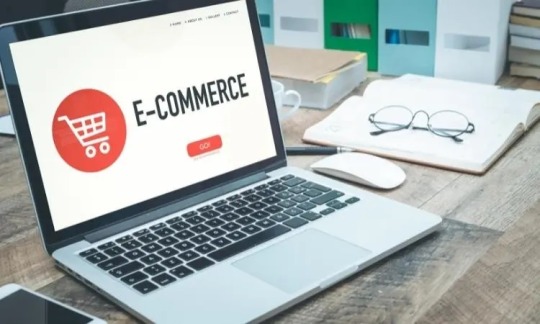
COVID-19 has disrupted the functioning of a lot of markets, industries and small businesses. Because there were few home delivery alternatives, individuals did not have access to both essential and non-essential things online. It has stopped the market from moving and interfered with how the economy typically operates. Businesses and industries have suffered significant losses as a result of the Covid-19 and the fact that the nation has been under lockdown since mid-March. However, it has been observed that this pandemic has had a significant impact on consumer spending behavior, especially in the FMCG market. While some traders have reacted favorably to it, others are implementing new strategies and technologies to reach as many customers as they can. Myanmar Golden Heart is one of them and working consistently.
Now, this has left a huge impact on the FMCG market. Truth be told, it will stay here for a long duration of time. Some are still managing to stay alive in such a depressed market, while others are finding new ways to overcome the market obstacles. By continuing to trade and interacting with customers in novel ways, they are making an effort to achieve this. Even some firms have been forced to close their doors after experiencing severe difficulties. This immense crisis has forced the businesses to innovate or discover new ways to operate in the market. In addition, they need to adopt new measures to exist in the market surpassing all ill side effects.
What exactly does the Fast Moving Consumer Goods (FMCG) sector entail?
Consumer packaged goods, or CPG, or fast-moving consumer goods, is another name for the FMCG sector. Because the consumer sector is expanding—it is the UK’s fastest-growing sector and a multibillion dollar industry—FMCG production is crucial. In both rich and developing nations, almost everyone makes a daily purchase of an FMCG product.
FMCG Trends
Because consumer preferences and lifestyles are always changing, the fast-moving consumer products market is developing at an extraordinarily quick rate. The largest FMCG producers are aware of how crucial it is to stay current with both technology and informational trends. And according to Myanmar Golden Heart it’s not just the products anymore—factors like package kinds, personal health, and a whole lot more now influence FMCG consumers’ decisions. One of the most crucial things for an FMCG company is to stay on top of the FMCG market, always changing and expanding trends. The following three trends are crucial for the fast-moving consumer products industry and can help manufacturers hasten organic growth.
To read more click here
Website: https://mghdistributors.com
Email: [email protected]
0 notes
Text
Scope of good startups in the FMCG market
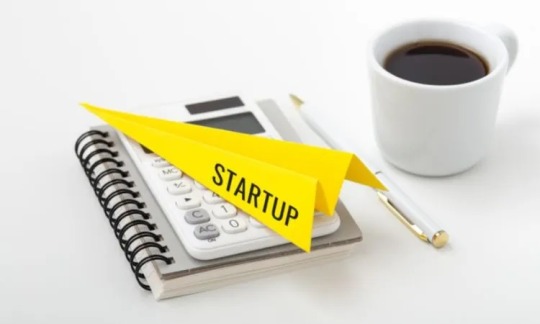
Firstly,Fast-moving consumer goods or commodities are FMCG, also called consumer packaged goods.
Secondly, it refers to the products that are in demand, sales take place quickly, and affordable.
Classification:-
Further, we can see the classification of the FMCG industry:-
Food & Beverage Products- Health beverages, cereals, bakery products, snacks, chocolates, ice cream, tea, processed fruits and vegetables, dairy products, etc.
Personal Care Products- Oral care, hair care, skin care, cosmetics/deodorants, perfumes, personal hygiene products, etc.
Household Consumables- Fabric wash, household cleaners, detergents, etc.
Tobacco products
Global overview:-
Firstly, According to a report, the FMCG business is in a position to grow by $309.5 billion by 2026.
History of the FMCG market
Firstly, Prakash Tandon laid the foundation of this company’s culture in 1961. Ashok Ganguly and SM Das also contributed to it.
Secondly, a new era of branded fast-moving consumer goods marketing began (FMCG). Also as they say, the rest is history.
Startups based on the FMCG
Further,these up-and-coming businesses have the potential to change the FMCG market.
Listed below are some of the promising startups:-
salesBeat- UK- based startup created the Sales intelligence software to beat the forecast demand for FMCG goods.
Shoplinks- A Singapore-based firm called Shoplinks offers an AI-based platform for shared business planning between FMCG brands and retailers.
Attico.io- An open-source CMS from the Belarusian company Attico.io allows FMCG companies to efficiently manage numerous websites.
Amplepac- Amplepac is a young Indian company that develops and produces FMCG packaging containers made of sustainable metal by taking advantage of its blockchain-based system
NOICE- An American startup produced the zero-waste toothpaste, NOICE using natural components including charcoal, essential oils, and other active substances.
To read more click here
Website: https://mghdistributors.com
Email: [email protected]
0 notes
Text
How to Start a Wholesale Distribution Business

The organization, planning, and professional networking steps needed in starting a distribution company. You can make a detailed to-do list if you’re interested in launching this kind of business to make sure you obtain the resources and required legal paperwork. In this article, we define a distribution firm and lay out the procedures for creating one.
What is a distribution business?
The section of the supply chain that transports goods and materials from a manufacturer to a retailer is known as distribution. A distribution company, also known as a sales and distribution company, purchases products from manufacturers to resell to retailers and turn a profit. Distribution companies come in two varieties:
Retail distributors in marketing: which are businesses that sell to consumers directly,
Wholesale distributors in marketing: which resale the goods to consumers
Distribution businesses may be autonomous or engaged in manufacturing partnerships.
How to Start a Wholesale Distribution Business

1. Business Plan
A person or business engaged in the wholesale business (who are the wholesalers) purchases goods from the supplier and distributes them to retailers. Businesses that handle wholesale distribution act as a bridge between retailers and producers. The variety of business concepts that are available across the nation lead to the assumption that this enterprise will be financially successful.
One needs to keep a few things in mind when starting wholesale distribution enterprises in India. Wholesale businesses in India offer a wide range of opportunities because there are so many industrial facilities there. They produce a range of fabrics, chemicals, medications, and FMCG goods. So this type of business thus protects the profitability and reputation of its main competitors.
To read more click here
Website: https://mghdistributors.com
Email: [email protected]
0 notes
Text
Types of Wholesale and Retail Distributors

A wholesaler is a distributor who acts as a middleman in the delivery of products from manufacturers to retailers. The bulk purchases made by the wholesaler result in cheaper prices and discounts. He is a link in the supply chain, but he is not always required.
Wholesalers do not engage in the sales of a broad range of commodities; instead, they are dealers in a single product or specialized group of products. This is not to imply that they are associated with any specific manufacturers, but rather that they are primarily a distribution company that provides finished goods to a ready-made market and are not interested in a manufacturer’s profitability or growth in his brand awareness. This characteristic sets them apart from distributors. Myanmar Golden Heart participates in marketing and advertising campaigns for the brands whose goods they sell. Another point worth mentioning is the cultural tendency for wholesale pricing to fluctuate. There are no fixed costs. Prices are established using quantity and bargaining power to be purchased by each buyer.
What is a Retailer?
Typically, retailers will purchase products from a producer, wholesaler, or other distributor and resell them to the general public. Contrary to huge retailers like Walmart and Target, who purchase goods in bulk from manufacturers or wholesalers, neighborhood grocery stores and small, family-run pharmacies can purchase from the same sources or from smaller vendors.
In either case, the retailer charges the customer a markup (the distinction between the product’s purchase price and resale price) for such things. Retailers achieve profitability in this way. The following are the principal product categories sold by retailers:
Food
Durable or hard items (such as furniture or cars)
Supple goods (such as clothing or footwear, which have a lifespan)
Art items (such as books, musical instruments, or art supplies)
Retailers to wholesalers
Two essential steps in the distribution process in the supply chain sector are retail and wholesale. Any product a company creates is initially distributed in bulk to the wholesaler, who then distributes it to the retailer, who in turn distributes it to the ultimate customers. Simply said, a wholesaler buys the products in bulk from the producer and then sells them to the retailer, who then sells them to the ultimate customers.
The primary objective of a wholesaler is to sell products to businesses or retailers who will then resell them. A retailer, on the other hand, focuses on the audience as the product’s final customer and solely sells to them. These two commercial connections serve as key marketing channel intermediaries. The supply chain will be affected if any of these links are missing. We shall discuss the key distinctions between wholesale and retail in this essay. You can reach out to Myanmar Golden Heart for more information.
To read more click here
Website: https://mghdistributors.com
Email: [email protected]
0 notes
Text
Definition and Types of Restaurant Equipment
All furniture equipment is included in the category of food restaurant equipment. Both visitors and workers utilize linen, cutlery, crockery, glassware, and other items in the service area. The market offers a wide variety of restaurant equipment to meet the needs of various types of foodservice companies.
According to MGH Distributors, the right restaurant equipment can improve the customer experience, enhance the store’s motif, and improve patron mood. The following is a list of food and restaurant equipment.
MGH Distributors: We distribute goods related to hotels, restaurants and bars with ease.
1. Furnishings
There are a wide variety of shapes, sizes, materials, colors, textures, and patterns for dining room furniture. When choosing them, consideration must be given to all of this restaurant equipment. in order for the furnishings to complement the design of the dining room. The majority of the service area is taken up by furniture, therefore this should be carefully organized to make the most of the available space.
Food service furniture types
Table
Chair
Sideboard
Table
Typically, restaurant tables are split into two sections:
Tabletops: These are available in a variety of sizes, forms, and materials, including wood, mica, glass, and stone. Due to their posh appearance, woodentops are frequently used in fine dining establishments.
Tablebases: These are the bases that hold the posts of the tables, and they come in a range of designs that are chosen to best compliment the theme and layout of the eating room. Tables with round bases appear to have more space underneath.
Chair
Types of chairs used in Food service:
Wood frame chairs: offer a unique style and give the venue a feeling of tradition and refinement. Steakhouses, family-style dining establishments, and fine dining establishments all prefer using wooden chairs. The natural hues and grain of the wood give the motif a refined and classy accent.
Metal chairs: Compared to wooden chairs, they often portray a more contemporary and streamlined appearance. A range of seat covers and backrest covers are available for painted metal restaurant chairs.
High chairs and booster seats: For children, high chairs and booster seats are a requirement in the majority of restaurants and food service facilities. High chairs are available in a range of colors and finishes in both wood and plastic.
Banquet chair: The chairs should be durable, comfy, stackable, and sturdy because they will be moved around a lot.
To read more click here
Website: https://mghdistributors.com
Email: [email protected]
0 notes
Text
Business Model Of Wholesale Distributors
With so many different vocations and services now available to people, the world has greatly advanced. One such industry is the delivery of goods and services in big quantities. The term “wholesale distribution” is used. This post is for you if you are thinking about working in this industry or want to learn more about “what are distributors” and “wholesale distribution”.
We will talk about the many types of participants in this process in this blog, as well as the model that most people employ. As a result, carefully study the articles and acquire all the necessary information.
Who is a wholesale distributor?
The person who directs the course of wholesale appropriation is known as the wholesale distributors. They are organizations that circulate items from makers to retailers or clients. A discount seller is a go between who is responsible for conveying monstrous wholesale shipments straightforwardly to retailers or shoppers. They don’t take part in the little everyday individual exchanges that a retail location would. The wholesalers rather center around disseminating items in huge amounts in mass shipments. They are normally the main organizations that participate in direct exchanges with makers. They additionally buy items at their wholesale cost straightforwardly from the actual makers.
Various wholesale distributors
The various varieties of wholesale distributors are our next topic. So they are divided up into three unique groups which consist of:
Merchant wholesalers
The most widely recognized kind of wholesalers comprises dealer wholesalers. They are wholesalers who purchase straightforwardly from the maker. Then, move the item to one of their distribution centers and afterward offer it to retailers or straightforwardly to clients. The discount activity accompanies its own gamble. For example, the distributor will be unable to empty the item completely or at a cost sufficiently high to justify its procurement in any case. The distributor bears every one of the misfortunes that might happen in this present circumstance.
To read more click here
Website: https://mghdistributors.com
Email: [email protected]
0 notes
Text
Future scope of the Textile Industry
The Indian textile industry is now in a scenario of threats and opportunities. While it enjoys opportunities to gain an advantage in unrestricted markets, it also faces unexpected threats. During 2010, the Indian textile industry has been facing many difficulties. Earlier, the global economic crisis caused a series of financial difficulties like closures, small capacity utilizations, layoffs and a decline in sales etc. Now, an acute increase in textile product prices and declining exports to the US because of competition are putting the textile industry in a challenging situation. Although, several amounts of recovery produced a ray of hope in the minds of people.
Indian Textile Industry

The close association of the textiles industry with agriculture and the former culture and traditions of the country. In terms of textiles, it is unique as compared to other industries in the country. Hence India is known as the world’s second-largest manufacturer of textiles and garments and the world’s third-largest manufacturer of cotton after China and the USA. The Indian market is also the second largest in terms of using Cotton, after China.
To read more click here
Website: https://mghdistributors.com
Email: [email protected]
0 notes
Text
Top 10 Successful Trading Strategies
Trading is a career that extends back to the days of barter. Two sides came together to make a transaction for commodities that each needed but the other possessed. That was the fundamental foundation of the trading system.
A stock exchange is essentially a gathering place for buyers and sellers of stocks, which reflect ownership claims on enterprises. Securities listed on a public stock exchange as well as securities traded privately may be included in these firms.
Anyone interested in becoming a good stock trader just needs to spend a few minutes exploring the internet for phrases such as “plan your trade; trade your plan” and “reduce your losses to a minimum.” These nuances may appear to be more of a distraction than beneficial information to new traders. If you’re new to trading, you’re definitely interested in learning how to make money quickly.
Each of the laws listed below is important on its own, but when combined, the results are powerful. Keeping them in mind might significantly improve your chances of success in the markets.
10 Proven Trading strategies
1. Always Keep your trading strategies ready:
Without a plan, you are almost certain to put yourself at risk. A trading strategy is a link that connects one or more techniques that will lead you to a prosperous future. A typical trading strategy is to set a target price based on a specific trend while limiting your maximum loss. It is critical to establish a rule-based trading strategy that prevents you from trading based on emotions.
To read more click here
Website: https://mghdistributors.com
Email: [email protected]
0 notes
Text
Fmcg Distribution Channel Network
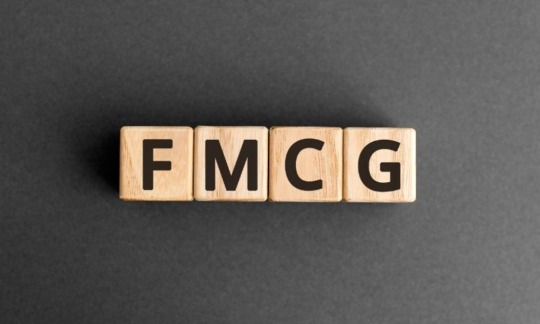
FMCG products transportation takes place from manufacturers to consumers along distribution channels. They serve as conduits for the movement of information, goods, and money throughout the system. While some FMCG producers prefer working directly with customers, the majority of producers use a distribution network to get their products to customers.
Article source: https://mghdistributors.com/fmcg-distribution-channel-network/
0 notes
Text
FMCG Distribution Channel Network
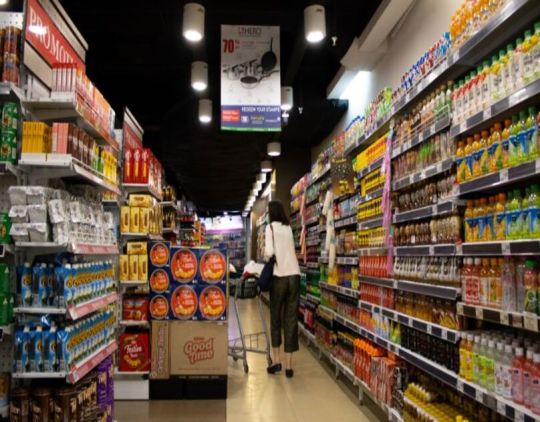
Structure of FMCG Distribution Channels
Different countries have different FMCG distribution channels. However all channels may be explained by applying straightforward ideas like directness, levels, density, diversity, and novelty.
Directness describes interactions between producers and consumers that take place without the involvement of a third party. When a manufacturer supplies goods to a customer through distribution networks, this is known as indirect distribution.
The term “level” describes how many channels can move a product from the manufacturer to the final consumer. Manufacturers work with franchise dealers in the auto industry, who then sell the items to the final customer. This channel has one level. Manufacturers frequently sell their products to wholesalers in the FMCG sector, who then sell them to retailers, who then sell them to consumers. This waterway has two levels.
The number of outlets that are present in a specific area is density. A distribution channel is classified as exclusive or intensive based on the number of outlets. Automobile distribution, which has fewer outlets in a city and is exclusive, is different from the distribution of soap, which has a large number of outlets, including wholesalers, supermarkets, and grocery stores.
Variety describes the different kinds of outlets where a product is sold. Given that they are offered in a number of locations, including paan shops, grocery stores, canteens, supermarkets, general stores, and even online, biscuit distribution may be very diverse. Given that sarees are sold only in specific stores, the distribution may be of low variety.
Novelty describes the fresh methods that manufacturing firms use to distribute their goods. Vending machines and online commerce are both very new to India and are seen as novelties.
Read more: FMCG Distribution Channel Network
0 notes
Text
Scope of good startups in the FMCG market

Fast-moving consumer goods or commodities are FMCG, also called consumer packaged goods. It refers to the products that are in demand, sales take place quickly, and affordable.
Classification
Further, we can see the classification of the FMCG industry:-
Food & Beverage Products- Health beverages, cereals, bakery products, snacks, chocolates, ice cream, tea, processed fruits and vegetables, dairy products, etc.
Personal Care Products- Oral care, hair care, skin care, cosmetics/deodorants, perfumes, personal hygiene products, etc.
Household Consumables- Fabric wash, household cleaners, detergents, etc.
Tobacco products
Startups based on the FMCG
Further,these up-and-coming businesses have the potential to change the FMCG market.
Listed below are some of the promising startups:-
salesBeat- UK- based startup created the Sales intelligence software to beat the forecast demand for FMCG goods.
Shoplinks- A Singapore-based firm called Shoplinks offers an AI-based platform for shared business planning between FMCG brands and retailers.
Attico.io- An open-source CMS from the Belarusian company Attico.io allows FMCG companies to efficiently manage numerous websites.
Amplepac- Amplepac is a young Indian company that develops and produces FMCG packaging containers made of sustainable metal by taking advantage of its blockchain-based system
NOICE- An American startup produced the zero-waste toothpaste, NOICE using natural components including charcoal, essential oils, and other active substances.
Read more: Scope of good startups in the FMCG market
0 notes
Text
Scope Of Good Startups In The Fmcg Market

Fast-moving consumer goods or commodities are FMCG, also called consumer packaged goods. It refers to the products that are in demand, sales take place quickly, and affordable. Growing rural market consumption except to fuel demand for FMCG goods. A sizable untapped rural market in India has ongoing potential for expansion in the FMCG industry. Opportunities are being created in rural India as a result of increased income levels and marketing steps to reach consumers at the base of the pyramid.
0 notes
Text
Best 5 FMCG Companies in Myanmar
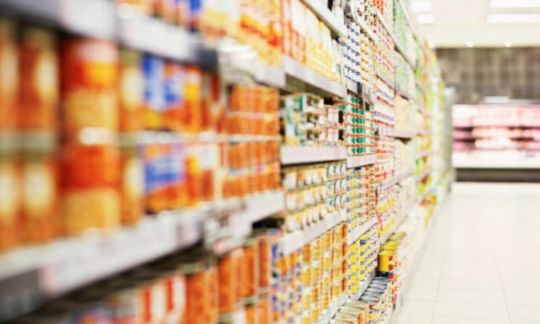
Fast Moving Consumer Goods (FMCG) are goods that sell out quickly and at a lower cost. Consumer Packaged Goods is another name for FMCG. Due to the high consumer demand FMCG usually has a very short shelf life. This short shelf life could also be due to the fact that some of the products are perishable. Things like soft drinks and confections have a high consumer demand whereas products like meat, baked goods and dairy are perishable products. These goods are purchased very often, rapidly consumed, have low prices and are sold in huge quantities. Once off the shelf, they tend to have a high turnover.
The Consumer Goods are divided into three categories which are durable goods, non durable goods and services. The durable products have a shelf life of at least three years. The non durable products tend to have a much shorter shelf life, less than a year. Fast Moving Consumer Goods make up for the biggest segment of the consumer goods. This falls into the non durable category as they have a short shelf life and are consumed immediately.
Types of FMCG
There are several categories of FMCG which we have mentioned below:
Prepared meals: This includes ready to eat meals like frozen food.
Beverages: Any kinds of beverages like a bottle of water, juice, cokes, energy drinks etc.
Processed Foods: Includes boxed items like cereals or cheese products or maggi/boxed pasta etc.
Fresh, Frozen and Dry goods: Fresh food includes vegetables, fruits. Frozen foods include frozen peas or other frozen veggies. Dry goods include dry fruits or nuts like raisins or other nuts.
Baked goods: These include baked foods like croissants, bagels, bread, cookies.
Cleaning products: Oven cleaners, window cleaners, glass cleaners and baking soda.
Office supplies: The office supply consists of pens, markers and pencils etc
Cosmetic and toiletries: Makeup products like concealer and foundation, toothpastes, shampoos or any other hair care product, soaps etc.
Read more: Best 5 FMCG Companies in Myanmar
0 notes
Text
Trends in the Textile Industry 2022

Increased demand for Natural fibers
One of the most notable recent trends in the textile business is a rise in demand for textiles consisting of natural resources. Examples of these fibers are available in nature include animal fur, plant materials, and mineral substances. Natural fibers have gained popularity since they are strong and widely accessible.
Among the natural fibers are:
Cotton
Flax
Milkweed
Hemp
Replacing Woven materials with Synthetic ones
The textile industry will experience a substantial shift toward non-woven fabrics in 2022 as well. Non-woven textiles are sheets and materials produced using thermal or chemical processes. Contrary to woven fabrics, which need the conversion of fibers into yarn, non-woven materials are joined together chemically. Non-woven fabrics are widely used in Asia, the Pacific, and Europe.
Synthetic fibers in personal hygiene items
There are non-woven materials in many hygiene goods. Non-woven fabric is an excellent option for the majority of sanitary items due to its absorbency and softness.
Use of Digital Textile Printing rises
Digital textile printing is one of the most recent trends in the textile industry.
Read more: Trends in the Textile Industry 2022
0 notes
Text
How to choose the right Engine oil

Engine oil, often referred to as motor oil, is used to cool internal combustion engines while they are running and lubricate the engine’s internal parts.
Grade and viscosity are helpful in ranking engine oils. Any oil can either be single-grade, acting at a single level of viscosity, or multi-grade, acting at two different viscosities based on temperature. The latter is currently more common in order to accommodate vehicles used year-round in a variety of situations. The viscosity grade scale, which has 11 grades with a range of 0 to 60, is helpful in quantifying the flow rate of both single-grade and multigrade oils. Oils with lower rankings are thicker than those with higher rankings, making them more suited for hotter settings.
What are the main benefits of engine oil?
First and foremost, engine oil saves car owners money on repairs. Without a lubricant, the engine would suffer severe damage very rapidly. Specifically, this is what high-quality engine oil provides.
1. Ensures a longer engine lifespan
By reducing friction between parts and cleansing the entire engine, engine oil shields the engine against blockage and damage. Mechanical parts last longer and rust less. The engine functions better and lasts longer as a result.
2. Ensures proper running of the engine
A well-oiled engine performs better. In fact, proper lubrication is necessary to prevent major mechanical damage. Cost of maintenance is impacted in addition to engine performance.
3. Decreases fuel consumption and CO2 emissions
The friction that results from excessive engine oil use or a low oil level changes the engine’s energy efficiency, which in turn raises fuel consumption. A high-performance oil also lessens atmospheric pollution releases.
Read more: How to choose the right Engine oil
0 notes
Text
Don’t Hold Back Your Hotel Kitchen Equipment
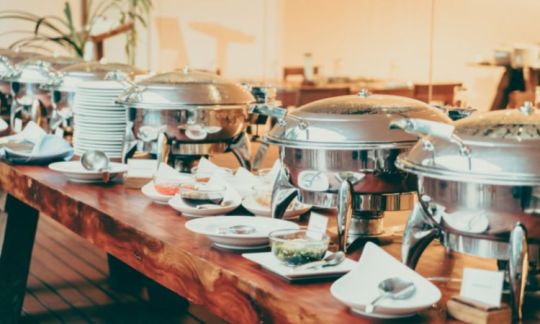
The main categories of hotel kitchen equipment required to operate a commercial kitchen are included in this list. The following necessary restaurant cooking supplies are all listed in depth on this list.
List of Equipment: Ovens, Ranges and ventilation, Food processors, Mixers, Slicers, Food preparation counters and cutting boards, Freezers and refrigerators, Safety equipment, Restaurant cooking tools, Servingware, Storage containers, Sinks, Kitchen Display System (KDS), Point of Sale system (POS), Steam table, Washing equipment, Sharpening stones, Microwave and Gas or electric grill.
Article source: https://mghdistributors.com/dont-hold-back-your-hotel-kitchen-equipment/
0 notes